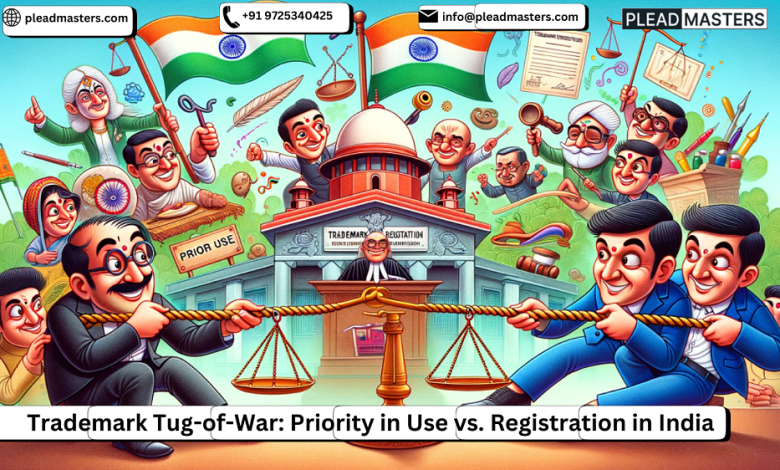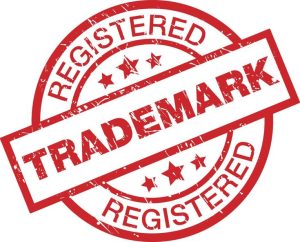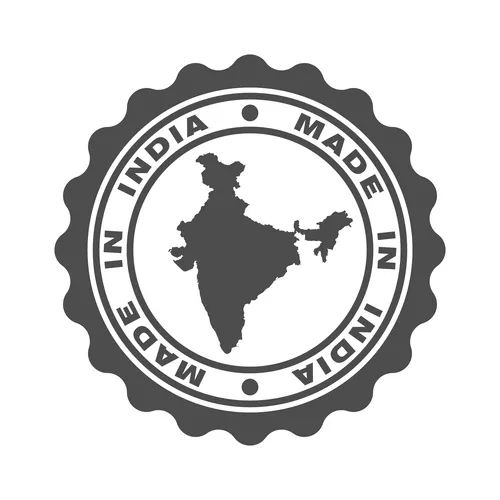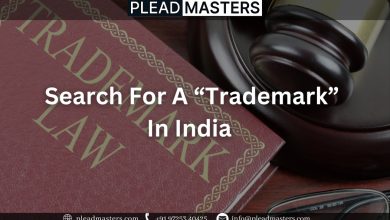Trademark Tug-of-War: Priority in Use vs. Registration in India


With the rising awareness of intellectual property rights and trademark registration among businesses in India, the disputes arising between priority of users vs. registration of the same trademark holder are also arising. In the dynamic landscape of Indian businesses, trademarks act as powerful tools for brand recognition and consumer trust.
However, conflicts can arise when two parties lay claim to the same trademark. In such scenarios, a crucial question emerges: What prevails – priority in the use of the trademark or the date of registration?
Indian trademark law adheres to the well-established principle of “priority in adoption and use” over priority in registration. This means that the party who can demonstrably prove they used the trademark first, in connection with the relevant goods or services, holds superior rights, even if the other party registered the trademark later.

Legal Framework in Trademark India
Trademark law in India is governed by the Trade Marks Act, 1999 and the Trade Marks Rule, 2017. According to Section 28 of the Trade Marks Act, 1999 registered users have the exclusive rights over a registered trademark in relation to the goods or services in relation to which the trademark has been obtained. However, Section 34 acts as a crucial exception.
Section 34 of the Indian Trade Marks Act, 1999 safeguards the rights of priority users over the registered users. It states that a registered trademark owner cannot prevent a third party’s use of the same mark if the third party can prove bona fide prior use throughout India or a particular part of India.
Understanding “Prioriority Use”in Trademark
For a party to claim prior use under Section 34, they must establish the following:

-
- Adoption and Use: The mark must have been demonstrably adopted and used in the course of trade for the relevant goods or services before the other party’s registration date.
-
- Continuous use: The mark must be used continuously by its owner
-
- In relation to the registered goods/services: The marks must be used in relation to the particular goods or services in which it is being registered.
-
- Bona Fide Use: The use must be genuine and legitimate, with the intent to establish a brand identity.`
-
- Geographical Extent: The extent of prior use (nationwide or regional) will determine the scope of protection. Evidence like sales figures, marketing materials, and public awareness can strengthen a prior use claim.
Judicial viewpoints of the Indian Courts- Trademark
Through the years and various judgments by the Indian courts, it can be seen that the judiciary has consistently upheld the principle of prior use. Some of the landmark cases involves Cadila Laboratories Ltd. v. Cadila Healthcare Ltd. (2001) in which the court ruled in favor of Cadila Laboratories, which established prior use of the “Cadila” trademark for pharmaceuticals, despite Cadila Healthcare’s subsequent registration. The Apex Court tried following many catena of judgments including domestic and foreign judgments only to discover later that no matter how precise those judgments were, the same cannot be applied to India. Considering the fact that Indian market has consumers ranging from different corners of India, there are high chances of public getting confused.
Granting more right to the prior users of the mark, the Supreme Court in the case of M/S. S. Narendra Kumar & Co. vs. Everest Beverages and Foods held that an interim injunction can be granted even if the prior user fails to provide concrete evidence of earlier use.

Nuances and Exceptions-Trademark India
While prior use offers strong protection, there are some factors to be kept in mind which might reduce the chances of their protection:
Abandonment: If a party with prior use abandons the trademark by ceasing its use for an extended period, the rights may be lost.
Geographical Limitations: The protection offered by prior use is limited to the geographical area where the mark was used.
Benefits of Trademark Registration
While priority in use offers a strong defense, trademark registration provides several advantages:
Statutory Recognition: Registration offers a legal presumption of ownership and simplifies enforcement actions.
Nationwide Protection: A registered trademark enjoys nationwide protection, unlike the geographical limitations of prior use.
Exclusive Rights: Registration grants exclusive rights to use the trademark for the registered goods or services, preventing others from using it without permission.
The Ideal Approach- Trademark
For comprehensive trademark protection, a strategic combination of both prior use and registration is recommended.
Establish Prior Use: Commence using the trademark in the marketplace as early as possible and document your use through marketing materials, sales records, and public awareness campaigns.
Secure Registration: File a trademark application with the Trade Marks Registry to obtain statutory recognition and nationwide protection.

Consulting an IP Attorney For Trademark
Trademark disputes can be complex. Consulting with an experienced intellectual property (IP) attorney is crucial to navigate the legal intricacies, assess your prior use rights, and guide you through the trademark registration process.
Conclusion
In India, priority in use takes precedence over registration when it comes to trademark rights. However, a well-rounded strategy that combines prior use with trademark registration offers the most robust protection for your brand. By understanding the legal framework and seeking professional guidance, you can ensure your brand enjoys the recognition and legal protection it deserves.
]Plead Masters- Reliable And Effective Legal Services [https://www.pleadmasters.com/
Your Trusted Partner In Navigating The Complex Landscape Of Intellectual Property (IP) Law. We are a team of dedicated IP professionals passionate about providing comprehensive, tailored, and cutting-edge legal solutions. We understand that every idea, creation, and brand is a valuable asset that needs the utmost protection in today’s competitive global marketplace.
External Link




